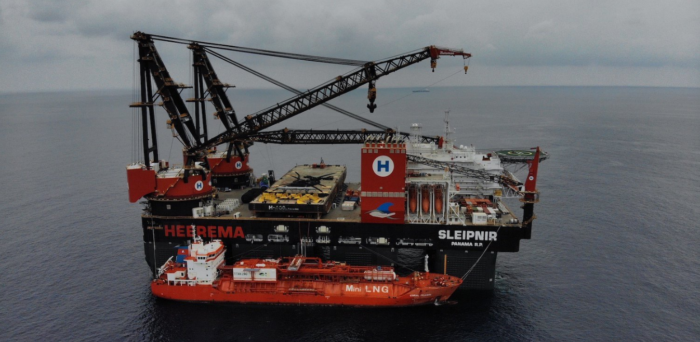The Sleipnir is scheduled to depart Singapore and head to Spain. According to its owner, the world’s largest semi-submersible crane vessel (SSCV) will take about 45 days to reach its journey, where it will be prepared for its first installation project in the Mediterranean.
According to HMC, Sleipnir is designed to work on large offshore projects such as installing and removing jackets, topsides, deep-water foundations, moorings and other offshore structures, such as windmills.
With two 10,000-tonne revolving cranes, the vessel can lift loads of up to 20,000 tonnes in tandem. Speipnir is also the world’s first crane vessel with dual-fuel engines capable of running on traditional MGO and LNG.
In addition, HMC commented
This unique vessel is the largest crane vessel yet built. It has the strongest pair of revolving cranes and also is the world’s first crane vessel with dual-fuel engines running on MGO and LNG, dramatically reducing harmful emissions.
The Sleipnir is the largest vessel of its type ever built and has a deck area of 220 meters by 102 meters, and is provided with strong pair of revolving cranes.
The Sleipnir is equipped with two 10,000-tonne revolving cranes which can lift loads of up to 20,000 tonnes in tandem. During the recent sea trials, the cranes managed to lift loads of 11,000 tonnes per crane (110% of its capacity).
To reach Spain, Sleipnir will pass around South Africa’s Cape of Good Hope to the Mediterranean, where Titan LNG will again supply the vessel using the Coral Fraseri, which will pass through the Suez Canal.































































